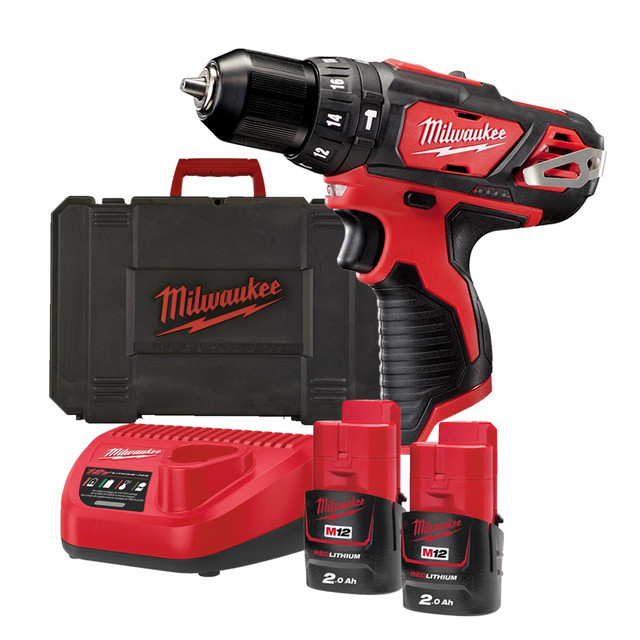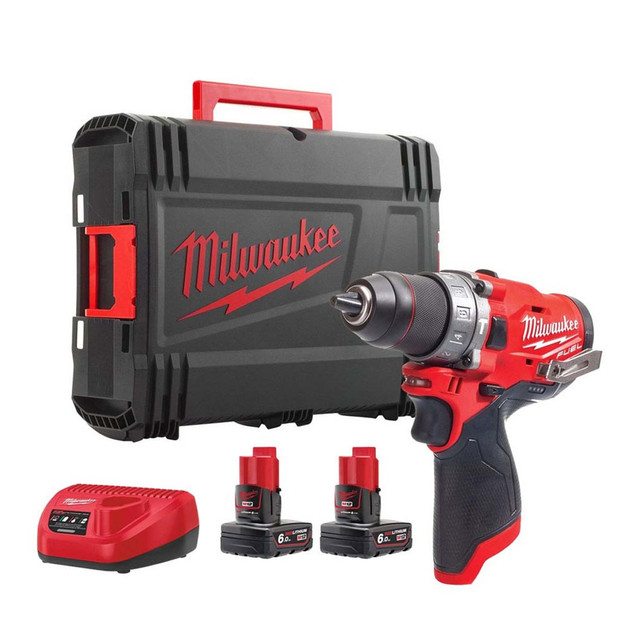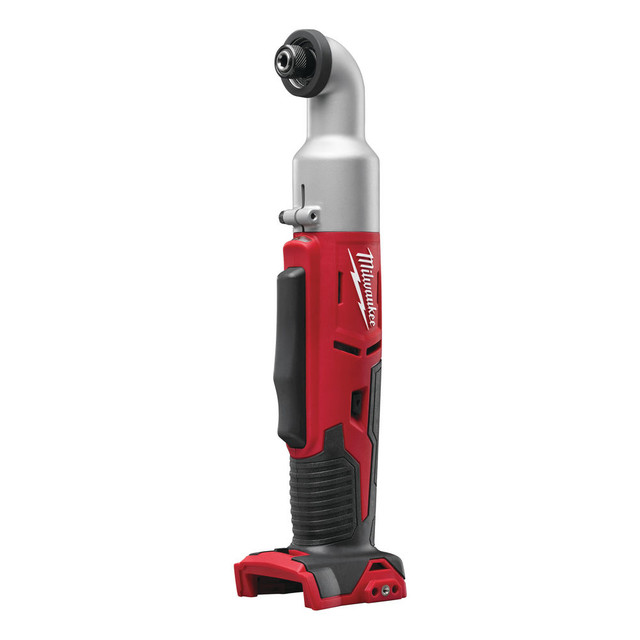Compact but Mighty: Best Tools for Tight Spaces (2025)

Working in cupboards, overhead, or between studs? This guide rounds up the best compact 12V tools—plus a couple of ultra-compact 18V winners—so you can get pro results where space is tight. We’ve prioritised overall length, head profile, torque-to-size ratio, and battery ecosystems, then cross-checked the key specs with manufacturer data.
Quick picks (at a glance)
- Best overall 12V combi drill: Milwaukee M12 FPD2-602X – only 152 mm long with 45 Nm torque; big-chuck (13 mm) in a tiny body.
- Best value 12V combi drill: Milwaukee M12 BPD-202C – proven compact 190 mm body, 30 Nm torque; great starter kit with 2×2.0 Ah packs.
- Compact 18V alternative (all-rounder): DeWalt DCD796P1 – 70 Nm, 0–550/2,000 rpm, and 190 mm length in an XR kit.
- Compact 18V alternative (high torque): Makita DHP489STJ – brushless LXT with 73 Nm (hard), 175 mm body length; short, stout and efficient.
- Best for awkward angles: Milwaukee M18BRAID-0 right-angle impact driver – 53 mm head, 307 mm length; when straight-on access isn’t possible.
- Best compact wrench for tight bays: DeWalt DCF922N-XJ – compact ½″ impact wrench with 406 Nm fastening / 610 Nm breakaway and 4 modes.
Comparison table: small size, serious bite
| Model | Platform | Length | Max torque | No-load speed | Hammer/Impact rate | Chuck/Anvil |
|---|---|---|---|---|---|---|
| Milwaukee M12 FPD2-602X | 12V M12 | 152 mm | 45 Nm | 0–450 / 1,550 rpm | up to 22,500 bpm | 13 mm chuck |
| Milwaukee M12 BPD-202C | 12V M12 | 190 mm | 30 Nm | 0–400 / 1,500 rpm | 22,500 bpm | 10 mm chuck |
| DeWalt DCD796P1 | 18V XR | 190 mm | 70 Nm | 0–550 / 2,000 rpm | 0–9,350 / 34,000 bpm | 1.5–13 mm chuck |
| Makita DHP489STJ | 18V LXT | 175 mm | 73 Nm (hard) | 0–550 / 1,800 rpm | 0–8,250 / 27,000 ipm | 13 mm chuck |
| Milwaukee M18BRAID-0 (right-angle driver) | 18V M18 | 307 mm | — | 2-speed | Impact driver | ¼″ hex; 53 mm head |
| DeWalt DCF922N-XJ (impact wrench) | 18V XR | Compact | 406 Nm (610 Nm breakaway) | 0–400 / 1,500 rpm | 0–3,550 ipm | ½″ detent pin |
Deep-dive reviews
Milwaukee M12 BPD-202C — sub-compact 12V combi that punches above its weight
The M12 BPD remains a go-to “first compact drill” thanks to its slim 190 mm body, 10 mm metal chuck and balanced ergonomics. With 30 Nm torque and 0–400/1,500 rpm, it’s ideal for fittings, small-diameter drilling and light masonry on the hammer setting (22,500 bpm). Great value as a kit with 2×2.0 Ah packs for minimal downtime.
Milwaukee M12 FPD2-602X — the compact 12V that feels like a bigger drill
If you need “smallest possible” without giving up bite, the M12 FPD2 is hard to beat: just 152 mm long, 45 Nm torque, and a full-size 13 mm chuck for better bit grip. Two mechanical speeds (0–450/1,550 rpm) and up to 22,500 bpm in hammer mode cover wood, metal and light masonry; the brushless POWERSTATE™ motor and REDLINK™ electronics help it run cooler and protect the pack.
DeWalt DCD796P1 — compact 18V XR all-rounder
DeWalt’s best-selling compact combi stays relevant because it’s short (190 mm), strong (70 Nm), and quick (0–550/2,000 rpm; 0–9,350/34,000 bpm). The kit bundles a 5.0 Ah XR battery, TSTAK case and all-metal gearbox—great if you want 18V runtime/torque without a bulky shell.
Makita DHP489STJ — short body, serious bite (18V LXT)
At 175 mm long, this brushless LXT combi is notably short for an 18V drill. It delivers 73 Nm (hard) with 0–550/1,800 rpm gearing and 0–8,250/27,000 ipm hammer action. If you often step up to larger timber bits or denser materials but still work in confined spaces, this is a sweet spot.
Milwaukee M18BRAID-0 — right-angle access when straight-on won’t do
A lifesaver for carcassing, M&E, and cabinet work: the M18 right-angle impact driver squeezes a 53 mm head into corners with a 307 mm overall length. Multi-handle body, 2-speed drive and ¼″ hex chuck keep fastener work moving where a standard drill simply can’t fit. Pair with compact M18 batteries to keep the nose slim.
DeWalt DCF922N-XJ — compact ½″ impact wrench for bays and brackets
For fixings that need real torque in tight engine bays or underfloor cavities, the DCF922 brings 406 Nm fastening and 610 Nm breakaway in a compact form with 4 modes (including Precision Wrench). 0–400/1,500 rpm and 0–3,550 ipm keep control on delicate starts.
Buying advice: choosing a compact tool that actually fits
- Measure your access. For tight cabinetry and between studs, overall tool length (and for right-angle tools, head size) matters more than raw torque. The M12 FPD2’s 152 mm length is a standout benchmark.
- 12V vs 18V. Modern 12V drills handle most fittings, small-diameter drilling and fix-offs with less fatigue. Jump to compact 18V if you’re often in dense timber, large spades/augers, or frequent masonry.
- Chuck size & bit grip. A 13 mm metal chuck (e.g., M12 FPD2) holds larger accessories more securely than a 10 mm chuck, without adding much bulk.
- Brushless + electronics. Brushless motors and pack/tool protection (REDLINK™, XR, LXT) improve efficiency and extend life—useful when slow, careful work in tight spaces heats tools up.
- Ecosystem matters. If you’re already on M12/M18, XR, or LXT, stick with it for battery interchangeability and lower total cost of ownership.
FAQs
Are 12V tools powerful enough for trades?
For small fixings, light carpentry, and service work: yes. The M12 FPD2’s 45 Nm and 13 mm chuck cover a wide spread of jobs without the bulk. For larger fasteners/hardwoods, pair it with an 18V tool.
What’s the advantage of a right-angle impact driver?
A tiny head (e.g., 53 mm on M18BRAID) lets you drive in corners where a standard drill can’t align, especially between joists, inside carcasses, or around pipework.
Which compact 18V drill is shortest here?
From our picks, Makita DHP489 lists 175 mm length while retaining strong torque—useful when you need 18V muscle in a short body.
Need some help with your order? Our new help centre has a wide range of helpful articles and guides!
If you have any additional queries, please do not hesitate to contact us below:






